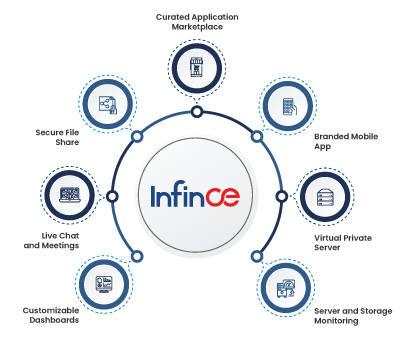The World Wide Web offers unbound potential. However, harnessing the potential requires offering stable and reliable solutions in what is essentially an extremely fluid and unstable environment. Web admins commonly encounter several issues which cause websites to go down or users to have a poor experience.
Here are the key web hosting challenges, and effective solutions to overcome such challenges.
1. Slow Website Loading and Navigation Speed:
Enterprises pay a very heavy price for slow loading websites.
Users rarely return to a website which takes a long time to load and/or which has slow internal navigation. Three out of every four web users do not return to websites which take more than four seconds to load. To compound matters, poor page load affects Google rankings negatively, leading to a downward spiral.
The best hosting providers adopt several strategies to preempt the slow loading of websites:
- Locating redundant servers across the world. The physical location of the data center hosting the website influences the page load time in a significant way. The nearer the data center hosting the server from the user’s location, the faster the load time of the website.
- Making use of quality hardware and infrastructure, to reduce network latency to the extent possible. Network latency is the time taken for a packet of data to reach one point, from another point.
- Offering Content Delivery Network (CDN), which makes available cached versions of the static portions of the website at optimized speeds, to several locations
2. The Challenge of Maintaining Uptime:
Web hosting thrives in a highly unstable ecosystem. Servers going down and various other issues are facts of life. However, downtime is fatal in the web hosting industry, and can even mean the death knell of the client’s business.
Web hosting companies need to ensure a minimum of 99.9% uptime rate, which is the industry standard. Anything more than about 10 minutes of downtime a week is fatal. The main reasons for unplanned, emergency downtime are hardware or software failure, security breaches, and administrator errors. Planned downtime, for inevitable maintenance, is best performed at night or off-peak hours when the website visitor count is usually at its lowest.
Web hosting providers strive to maintain high uptime and overcome the challenge of downtime by:
- Deploying stable software, and updating it regularly, to prevent software failure
- Deploying high quality and proven hardware components
- Undertaking periodic software and hardware audit to pre-empt obsolescence.
- Offering online support on a 24×7 basis to clients, to resolve client queries and issues promptly.
- Offering FAQ’s, user forums and other forums to share knowledge, for speedy resolution of issues, and even preempt issues through timely client action.
- Ensuring sound network security
- Ensuring adequate protection from hazards such as floods and fire at the physical data center location
3. Challenges of Providing Scalability
Today’s e-commerce companies and website owners expect highly scalable resources. However, hosting providers are often hard pressed to provide it.
Many web hosting companies suffer from dated infrastructure, such as old server hardware, outdated software, a narrow broadband connection, and inadequately skilled support staff. Such restraint imposed a resource crunch, which impedes scalability.
Even when there is nothing wrong with the software or hardware, the limited resources being deployed, or the architecture of the data center may create bottlenecks. Emerging technologies such as IoT, Artificial Intelligence, and Big Data offers unbound possibilities, but also makes huge demands on resources.
Inability to scale up resources when required may lead to websites bouncing due to some unknown restrictions, inability to log on to the mailbox or send email attachments, and limits being imposed without any option to mitigate it. For clients, this translates to missed opportunities and poor end-customer experience.
Successful web hosting providers:
- Overhaul their legacy infrastructure from time-to-time to ensure they are equipped to meet the demands made by emerging technologies.
- Identify the gap between requirements and infrastructure capabilities, and work towards filling the gap by provisioning the required hardware and software.
- Upgrade staff skills through training and other interventions, to ensure they are competent to do the needful when required.
4. Security Challenges
Web hosting companies are always under the Damocles sword of security. Cyber breaches are the order of the day. Breaches are costly in terms of loss of sensitive data, crippling regulatory fines, loss of trust and reputation, and more.
A common pitfall from web hosting providers is failing to restrict URL access. Without such restrictions, unauthorized users may view pages they should not have access to. With such access enabled, attackers may easily forge URLs to access hidden pages.
Many web hosting providers offer shared hosting as a low-cost solution for clients. However, sharing an IP address among clients means linking separate domains using a single server. When a client is blacklisted as a spammer, it leads to a situation where all other clients sharing the same IP is also blacklisted.
Web hosting companies may overcome the pressing security challenges by:
- Deploying the latest and state-of-the-art security infrastructure, including firewalls, networking monitoring systems, and more
- Implementing Secure File Transfer Protocol (STFP) to plug loopholes
- Blocking all file types not served by the application.
- Create an access control matrix which stops unauthorized users viewing content.
- Implementing strict access control mechanisms at the data center to prevent rogue insiders and unauthorized attackers from taking physical control over critical web assets.
Data Centers utilize several physical and digital resources to manage the daily operations. Highly successful providers are always on their toes, to ensure the deployed resources work as expected. They also strive to ensure proper management of day to day operations, undertake prompt and periodical updates, and attend to maintenance issues promptly. Last but not least, they never underestimate the value of a skilled team with experience and expertise.





